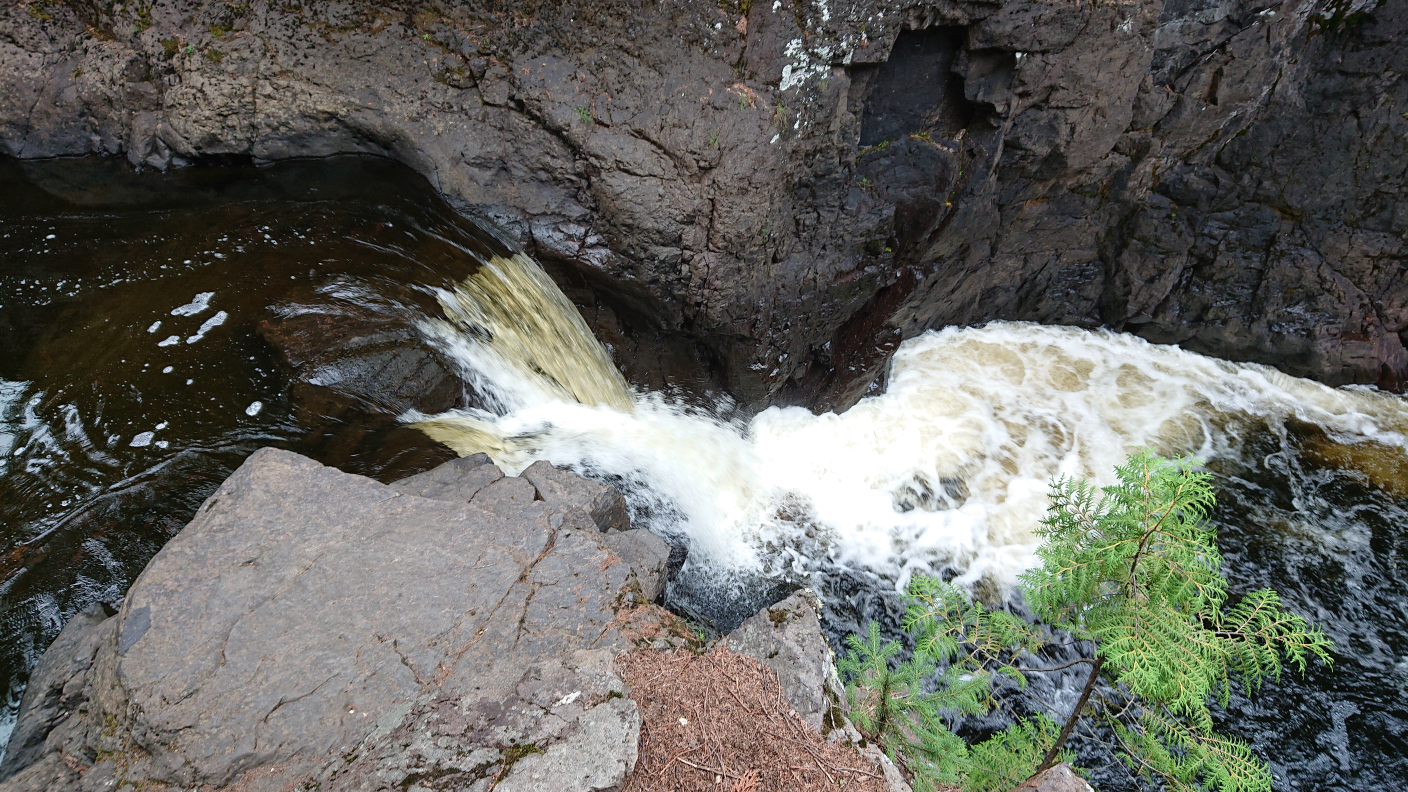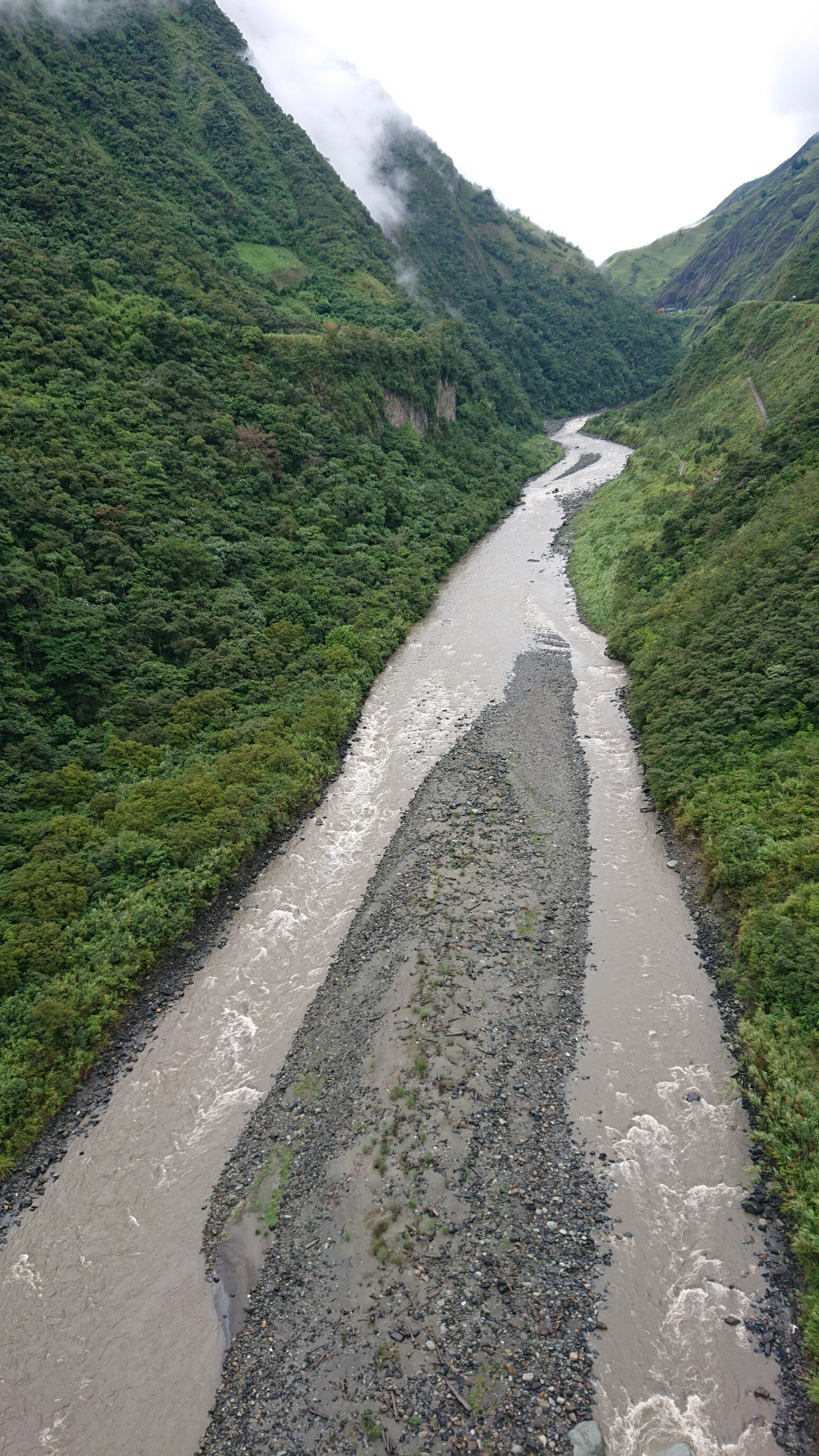Bedrock and alluvial rivers; detachment- and transport-limited evolution
Rivers may be broadly classified into two endmember types: bedrock rivers, whose beds and banks are made of solid rock, and alluvial rivers, whose beds and banks are made of material transported by the river itself. Mixed bedrock–alluvial rivers also exist.
Learning Goals
- Know how to identify bedrock vs. alluvial rivers.
- Understand the sediment supply and transport conditions in which each river forms.
- Understand the relationships between the similar terms “supply limited” and “detachment limited”, and how these compare with “transport limited”.
Definitions
- Transport limited: a river whose pace of morphological evolution is set by its ability to remove and carry downstream the sediment that it is supplied from the watershed.
- Detachment limited: a river whose pace of morphological evolution is set by its efficacy at eroding cohesive materials, such as bedrock, consolidated clay, and glacial till.
-
Supply limited: a river whose morphology (but not pace of morphological evolution) is set by the fact that it is supplied less sediment from the watershed than it is capable of moving downstream. Such rivers will therefore be net erosional and incise.
- Bedrock river: a river whose bed and banks are made of bedrock.
- Alluvial river: a river whose bed and banks are composed of unconsolidated materials transported by the river itself.
- Mixed bedrock–alluvial river: a river that includes some alluvial cover and some exposed bedrock.
Conditions for river morphology
- Bedrock rivers exist in zones where the ability of the river to remove sediment is greater than the supply of sediment, over a time scale required to remove any preexisting deposits. Therefore, they are supply limited. (Note: this differs from “detachment limited”, which describes that the ability of the river to erode bedrock limits the pace of channel evolution. All detachment-limited rivers must be “supply limited” in order to reach their beds; not all supply-limited rivers need be detachment limited: if they expend the majority of their power clearing away incoming sediment rather than eroding the bedrock (and eroding bedrock is not difficult compared to removing incoming sediment), then these supply-limited bedrock rivers may still be transport-limited.
- Alluvial rivers exist where the incoming sediment supply is greater than or equal to the quantity of sediments that the river moves downstream. Such rivers are transport limited – but they may convert into bedrock streams if they incise down to rock, and to detachment-limited streams either when cutting down to rock or encountering a consolidated deposit (e.g., clay or glacial till).
 Conditions for bedrock vs. alluvial rivers, from Ellen Wohl et al. (2015).
Conditions for bedrock vs. alluvial rivers, from Ellen Wohl et al. (2015).
Bedrock and alluval sections of rivers
 From Ellen Wohl et al. (2015).
From Ellen Wohl et al. (2015).
Bedrock and alluvial sections of rivers can exist at many scales, from portions of a singe river reach, to adjacent reaches of a river, to different portions of a drainage network. Note how these “real-world” cases are more complicated than the eroding bedrock mountains \(\rightarrow\) low hills and valleys \(\rightarrow\) coastal plain schematic that typical diagrams show for portions of a river. These bedrock and alluvial reaches evolve differently, with bedrock reaches producing fresh sediment through erosion and alluvial reaches more actively exchanging with biological and chemical processes and their surrounding ecosystems.
Examples
Cascade River, north shore of Lake Superior, Minnesota
 Photo: A. Wickert
Photo: A. Wickert
The purely bedrock bed of the Cascade River, along with the scoured and eroded bedrock, show that it is here a suppy- and detachment-limited river.
Bedrock and alluvial rivers in Scotland
 The continuum from bedrock to mixed bedrock–alluvial to alluvial rivers, from Katie Whitbread et al. (2015).
The continuum from bedrock to mixed bedrock–alluvial to alluvial rivers, from Katie Whitbread et al. (2015).
These river examples are from the Scottish Highlands. Note that the alluvial river here is still in a confined bedrock valley; if its sediment supply decreases, it could quickly revert to being a bedrock river.
The alluvial Río Pastaza in its river gorge, Ecuador
 Photo: A. Wickert
Photo: A. Wickert
This photo, taken from a cable car above the Río Pastaza, Ecuador illustrates a transport-limited alluvial river that may evolve over the geological time in a detachment-limited fashion. The Río Pastaza contains a mid-channel bar, which is characteristic of a river overloaded with sediment – it stores some of this sediment in bars within the channel rather than being able to flush it downstream. However, note the steep gorge walls; hillslope processes have not had much time to evolve the river gorge! It is incising rapidly into bedrock. Therefore, while it is alluviated today, it likely often scours this alluvium away and touches down on its bed, eroding the bedrock and deepening its valley. Therefore, over geological time, it is probably a detachment-limited river.
The Mississippi River at St. Anthony Falls
Rotate the frame away from me and towards the river, and be sure to select “1080p/HD” (at least until technology gets ahead of us). Much of the Mississippi River’s course is alluvial, but the falls – prior to their coverage with a concrete apron – was a bedrock reach. Downstream of the falls, where I am recording, is mixed bedrock–alluvial, with bedrock islands sitting in a river with an alluvial bed. The rapids cross buried limestone blocks following the retreat of St. Anthony Falls. This photo is from a rare river drawdown, in which the lower St. Anthony lock and dam is open, in which we can observe this reach of river at its natural flow conditions.
Side channel of the St. Croix River, Wisconsin
Photo: A. Wickert
This is an example of a low-gradient transport-limited river system. Note the points of interest and details above.

This work is licensed under a Creative Commons Attribution-ShareAlike 4.0 International License.
